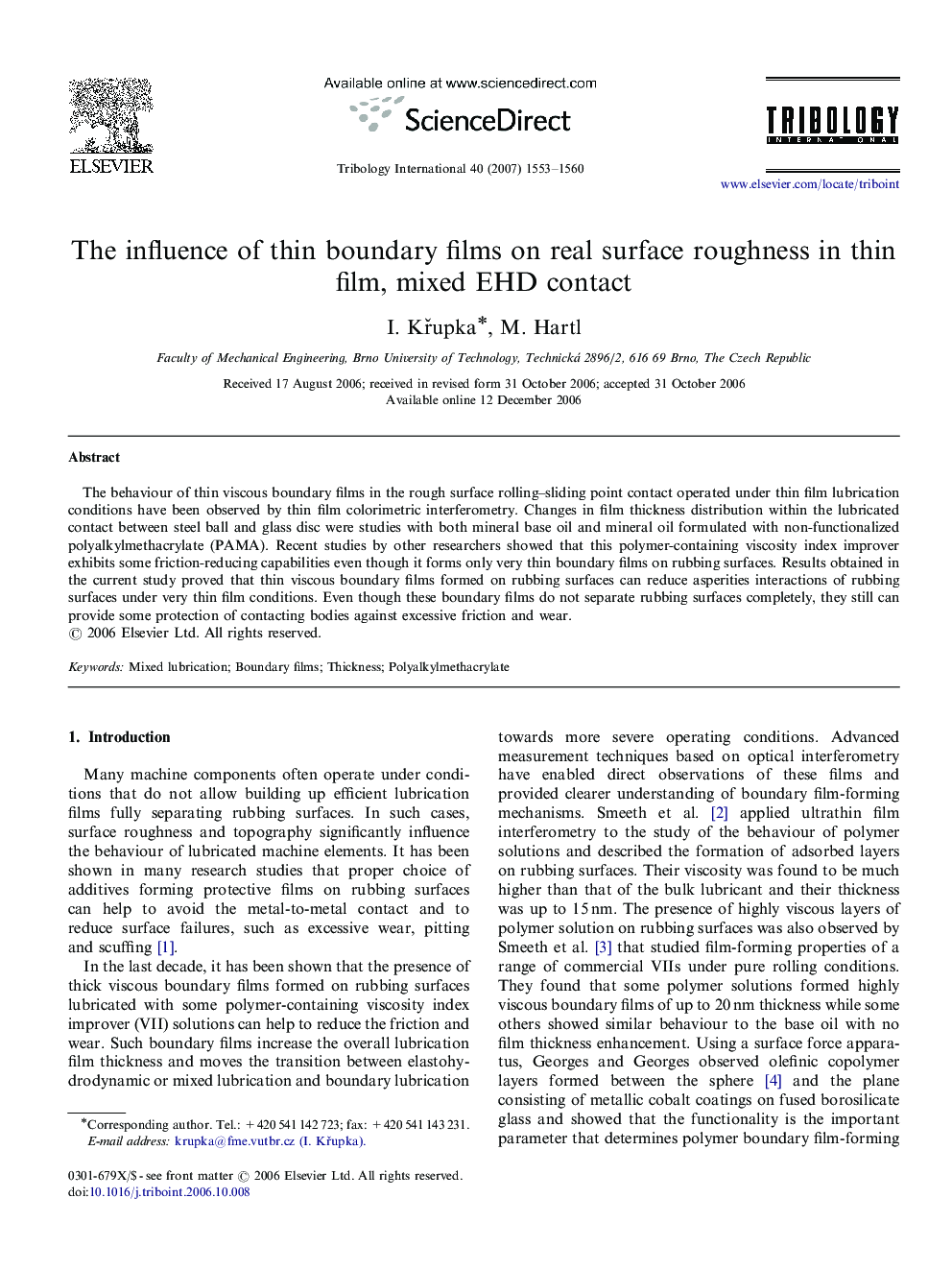| Article ID | Journal | Published Year | Pages | File Type |
|---|---|---|---|---|
| 616590 | Tribology International | 2007 | 8 Pages |
The behaviour of thin viscous boundary films in the rough surface rolling–sliding point contact operated under thin film lubrication conditions have been observed by thin film colorimetric interferometry. Changes in film thickness distribution within the lubricated contact between steel ball and glass disc were studies with both mineral base oil and mineral oil formulated with non-functionalized polyalkylmethacrylate (PAMA). Recent studies by other researchers showed that this polymer-containing viscosity index improver exhibits some friction-reducing capabilities even though it forms only very thin boundary films on rubbing surfaces. Results obtained in the current study proved that thin viscous boundary films formed on rubbing surfaces can reduce asperities interactions of rubbing surfaces under very thin film conditions. Even though these boundary films do not separate rubbing surfaces completely, they still can provide some protection of contacting bodies against excessive friction and wear.
